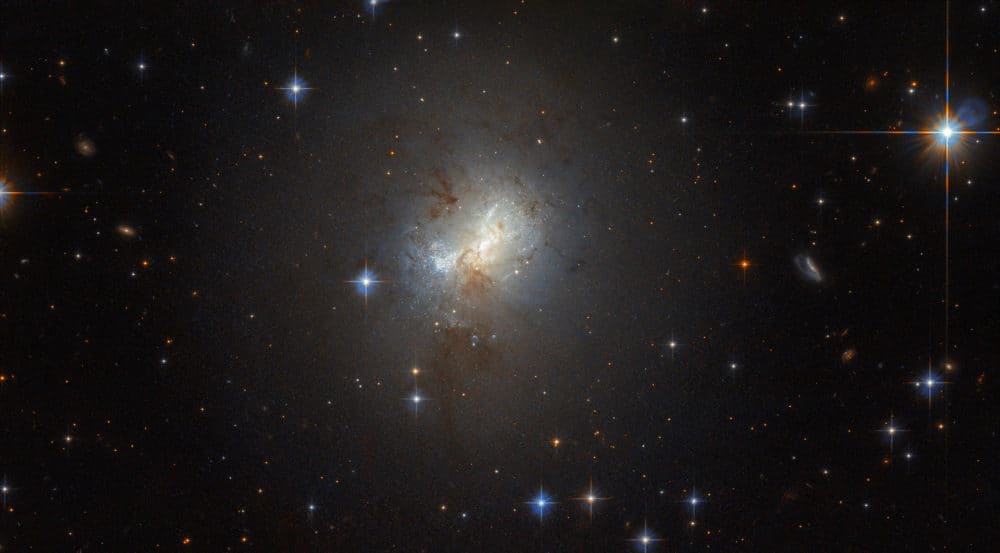The Cosmos with ESO 495-21
ESO 495-21 is located approximately 30 million light-years away in the constellation of Pyxis.
Also known as Henize 2-10 or LEDA 24171, it is a dwarf starburst galaxy — this means that it is small in size, but ablaze with rapid bursts of star formation.
Starburst galaxies form stars at exceptionally high rates, creating stellar newborns of up to 1,000 times faster than our own Milky Way Galaxy.
ESO 495-21 is only 3% the size of the Milky Way, and yet there are indicationsthat the black hole at its core is over a million times as massive as the Sun — an extremely unusual scenario.
This black hole may offer clues as to how black holes and galaxies evolved in the early Universe.
The origin of the central supermassive black holes in galaxies is still a matter of debate.
Do the galaxies form first and then crush material at their centers into black holes, or do pre-existing black holes gather galaxies around them?
Do they evolve together — or could the answer be something else entirely?
With its small size, indistinct shape, and rapid starburst activity, astronomers think ESO 495-21 may be an analogue for some of the Universe’s first galaxies.
Finding a black hole at ESO 495-21’s heart is therefore a strong indication that black holes may have formed first, with galaxies later developing and evolving around them.
